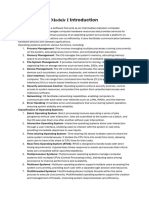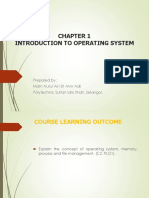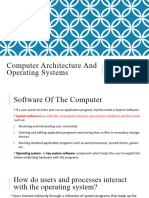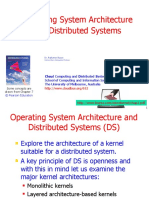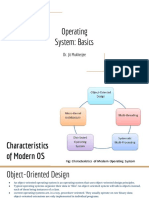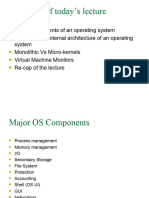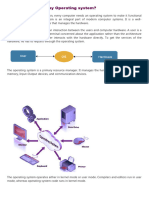0% found this document useful (0 votes)
13 views49 pagesWeek 3 - Lecture Three
This document discusses the architecture of operating systems, detailing various designs such as simple, layered, and microkernel architectures. It explains the functions of the kernel, including memory management and process scheduling, and outlines the components and services provided by operating systems. Additionally, it covers system calls and their types, emphasizing their role in facilitating communication between user programs and the operating system.
Uploaded by
etorrnamnyakutse99Copyright
© © All Rights Reserved
We take content rights seriously. If you suspect this is your content, claim it here.
Available Formats
Download as PDF, TXT or read online on Scribd
0% found this document useful (0 votes)
13 views49 pagesWeek 3 - Lecture Three
This document discusses the architecture of operating systems, detailing various designs such as simple, layered, and microkernel architectures. It explains the functions of the kernel, including memory management and process scheduling, and outlines the components and services provided by operating systems. Additionally, it covers system calls and their types, emphasizing their role in facilitating communication between user programs and the operating system.
Uploaded by
etorrnamnyakutse99Copyright
© © All Rights Reserved
We take content rights seriously. If you suspect this is your content, claim it here.
Available Formats
Download as PDF, TXT or read online on Scribd
/ 49








